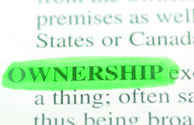Using user generated content in France for purposes of news reporting
The freedom to use UGC in France has subtle differences to that in the UK, demonstrating that a one-size-fits-all approach may not always work in practice, particularly where use in France is involved.
User generated content ("UGC") has become one of the key elements of the Web 2.0 and interest in UGC continues to grow. Over the last decade, some of the most significant events in the world were covered thanks to photos and videos taken by those who witnessed it, meaning journalists of course but also those we could call "journalists by accident", people with a camera or a smartphone in hand who are at the right (or wrong) place at the right (or wrong) time. For those reasons, news organisations have many reasons to use UGC.
However, in France, news organisations should address in priority two major issues before using UGC:
- Is the content suitable for broadcasting or publication?
- Do they have the right to broadcast or publish such content?
The suitability of the UGC
As broadcasters or publishers, news organisations are responsible for the content they broadcast or publish.
Generally, news organisations must particularly pay attention not to use defamatory UGC. However, even in this case it remains possible to exonerate themselves by demonstrating the truth of the facts broadcasted or published or by furnishing proof of good faith, by the demonstration of a serious investigation that led to the use of such UGC.
There exists also an "offense of false information". This is false information where the information is presented as true whilst it is false. On this basis, it is highly recommended to newsrooms to double-check their sources of information.
Finally, the broadcasting or publication of UGC may raise privacy issues. Indeed, the broadcasting or publication of images, regardless of the medium used, undermining  someone's privacy, is the responsibility of the broadcaster or publisher. Also, the fact, regardless of the method used, of infringing the privacy of other people's privacy by filming without consent the image of a person in a private place could result in a fine of 225 000 euros. The French Penal Code provides the same punishment for the mere dissemination of such footage. However, there are a few exceptions (e.g. public interest) that might legitimate the breach of someone's privacy.
someone's privacy, is the responsibility of the broadcaster or publisher. Also, the fact, regardless of the method used, of infringing the privacy of other people's privacy by filming without consent the image of a person in a private place could result in a fine of 225 000 euros. The French Penal Code provides the same punishment for the mere dissemination of such footage. However, there are a few exceptions (e.g. public interest) that might legitimate the breach of someone's privacy.
A systematic and meticulous verification process should determine whether UGC is usable or not, or should at the very least allow broadcasters and publishers to define the risk profile of such UGC.
The right to use the UGC
Once the UGC has been checked and it is clear from this analysis that it is appropriate and that it can be published or broadcast, then must come the time of assessing the need for a specific right granted by the owner of the UGC.
The right to broadcast any UGC (a video for example) can take root in an authorisation granted by the owner of such UGC but it can also be justified by the application of a fair dealing defence.
A right granted by the owner of the UGC
As we will see below, obtaining the right to publish or broadcast a UGC is not always a requirement. However, the authorisation of the author is the surest way to acquire the certainty that such publication or broadcasting will not be subject to any claim.
When securing a licence to use UGC under French law, the enforceability of the licence will depend on whether the scope of the rights granted is clearly stated in the agreement or not. This militates in favor of securing detailed and comprehensive permissions. Broadcasters, for example, should clearly secure the right to broadcast.
They should specifically bear in mind that French law does not allow perpetual licences. Hence, if the owner grants a right to use his content without limiting specifically this right to a certain period, it is possible to withdraw this authorisation at any time. Thereafter, the news organisation would then need to rely on a fair dealing defence to continue using the content. To avoid that issue, we usually recommend limiting the licence to the whole duration of the intellectual property rights which gives a permanent right over the UGC until it passes into the public domain.
 To secure such authorisation, it is possible to imagine a process based on sending a systematic authorisation request to the author of a UGC, sent by email for example. This authorisation can therefore be accepted by the author of the UGC in exchange for a credit for example, or even against the payment of a fee. Yet that has to be preceded by the determination of who owns the content.
To secure such authorisation, it is possible to imagine a process based on sending a systematic authorisation request to the author of a UGC, sent by email for example. This authorisation can therefore be accepted by the author of the UGC in exchange for a credit for example, or even against the payment of a fee. Yet that has to be preceded by the determination of who owns the content.
If this process was to be proved too heavy and inappropriate to news organisations, given the tight deadlines they are on, it remains possible to use a fair dealing defence.
The fair dealing defences
It is not always required to seek permission from the owner to publish or broadcast a UGC.
The relevant fair dealing defences under French law are as follows:
- the right of short quotation:
The quotation must remain short and, even in that case, not all short quotations are lawful. They must also be justified by their critical, polemical, educational, scientific or information purposes. Regarding news organisations, they would usually be well placed to rely on this latter condition. - the right of reproduction and representation of a plastic, graphic or architectural work for an immediate information purpose:
Graphic works include photographs, so this defence is potentially wider than the UK news reporting defence. However, the defence does not cover videos, which is narrower than the UK defence. Unlicensed users of videos would have to try to rely on the short quotation defence. The defence emphasises the condition of immediacy. In such instance, the time factor has an impact and the subject of such broadcasting or diffusion must have a topical nature. - the right of representation in the background:
According to case law, the accessory use of a work is lawful. It is then possible to film or photograph a work in the background for example. In such a case, the work is indeed communicated to the public, but yet so imperfectly or so elusively represented that the exclusive right of the author is not engaged.
 Where one of the aforementioned fair dealing defences applies, it is not required to get permission to use the UGC. Yet, it is mandatory to credit the source of the content when using the right of short quotation. In any event, for the fairness of the use, we always recommend crediting the owner.
Where one of the aforementioned fair dealing defences applies, it is not required to get permission to use the UGC. Yet, it is mandatory to credit the source of the content when using the right of short quotation. In any event, for the fairness of the use, we always recommend crediting the owner.
If you have any questions on this article please contact us.


Valérie
Aumage

Thomas
Adhumeau
Valérie and Thomas look at the main issues to think about when using UGC in France.
"The enforceability of the licence will depend on whether the scope of the rights granted is clearly stated in the agreement or not. This militates in favor of securing detailed and comprehensive permissions."

